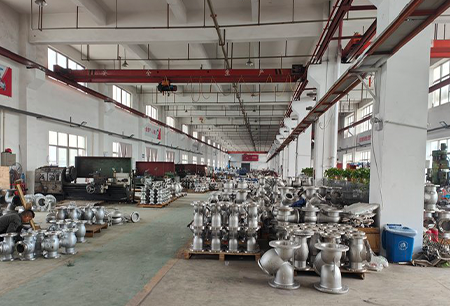110mm ball valve specifications and applications for industrial use and efficiency
Understanding the 110mm Ball Valve Essential Components and Applications
In the realm of fluid control systems, valves play a crucial role in regulating the flow of liquids and gases. Among the various types of valves available today, the ball valve stands out for its reliability and efficiency. Specifically, the 110mm ball valve has gained significant attention due to its size and versatility, making it an essential component in various industrial applications. This article aims to delve into the characteristics, advantages, and typical uses of the 110mm ball valve.
What is a Ball Valve?
A ball valve is a type of quarter-turn valve that uses a hollow, perforated, and pivoting ball to control the flow of fluid. When the ball's hole aligns with the flow direction, the valve is open, allowing the fluid to pass through. Conversely, when the ball is turned 90 degrees, the flow is blocked. This simple yet effective design makes ball valves ideal for on/off control applications.
Key Features of the 110mm Ball Valve
The 110mm ball valve is designed with a diameter of 110 millimeters, which is suitable for handling substantial volumes of fluid. Its construction typically involves materials like stainless steel, brass, or PVC, depending on the application requirements. The features of a 110mm ball valve include
1. High Flow Capacity The larger diameter allows for a higher flow rate, making it suitable for industries that require efficient fluid transport.
2. Durability Many 110mm ball valves are designed to withstand high pressures and temperatures, ensuring longevity and reliable performance.
3. Easy Operation The quarter-turn operation makes it straightforward to use, reducing the risk of operator error and enhancing overall system efficiency.
Advantages of Using a 110mm Ball Valve
The 110mm ball valve offers several advantages, particularly in industrial settings
110mm ball valve

1. Quick Shut Off The rapid open and closed operation helps in quick isolation of sections in a piping system, which is crucial during maintenance or in case of emergencies.
2. Versatile Applications This size valve is widely used in various industries, including water treatment, oil and gas, chemical processing, and HVAC systems.
3. Cost-Effective While the initial investment may be higher than other types of valves, the durability and efficiency of ball valves can lead to lower long-term maintenance costs.
4. Low Maintenance Requirements With fewer moving parts than gate valves or globe valves, 110mm ball valves require less frequent maintenance, saving both time and money.
Common Applications
The 110mm ball valve is employed across a multitude of applications. Some of the most common include
- Water Distribution In municipal water systems, these valves help regulate water flow and ensure effective distribution across the network.
- Oil and Gas The robust construction allows for use in the transportation and handling of various types of oils and gases, making it a staple in petrochemical facilities.
- Chemical Processing Their ability to withstand corrosive substances makes them ideal for the chemical industry, where they manage the flow of reactive materials.
- HVAC Systems In heating, ventilation, and air conditioning systems, 110mm ball valves help control the flow of water and refrigerants, maintaining optimal performance.
Conclusion
In conclusion, the 110mm ball valve is an essential component in many fluid control systems, providing reliable, efficient, and versatile solutions for a wide range of industries. Its design allows for high flow capacity, easy operation, and minimal pressure drop, making it a preferred choice for many applications. As industries continue to evolve, the demand for reliable valves like the 110mm ball valve will remain crucial, ensuring the efficient management of fluids in complex systems. Understanding its features and applications can aid in making informed decisions for system design and optimization.
-
The Key to Fluid Control: Exploring the Advantages of Ball Valves in Industrial SystemsNewsJul.09,2025
-
The Versatile World of 1, 2, and 3 Piece Ball ValvesNewsJul.09,2025
-
Stainless Steel Ball Valves: The Ideal Choice for Efficient Flow ControlNewsJul.09,2025
-
Optimizing Fluid Control with Ball Float ValvesNewsJul.09,2025
-
Manual Gate Valves: Essential for Control and EfficiencyNewsJul.09,2025
-
Everything You Need to Know About Butterfly ValvesNewsJul.09,2025
-
The Versatility of Wafer Type Butterfly ValvesNewsJul.08,2025




